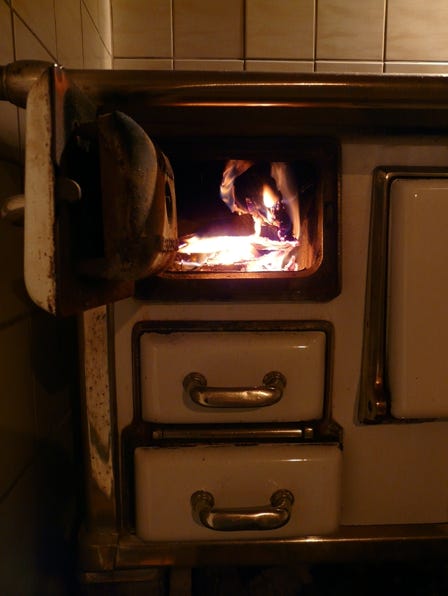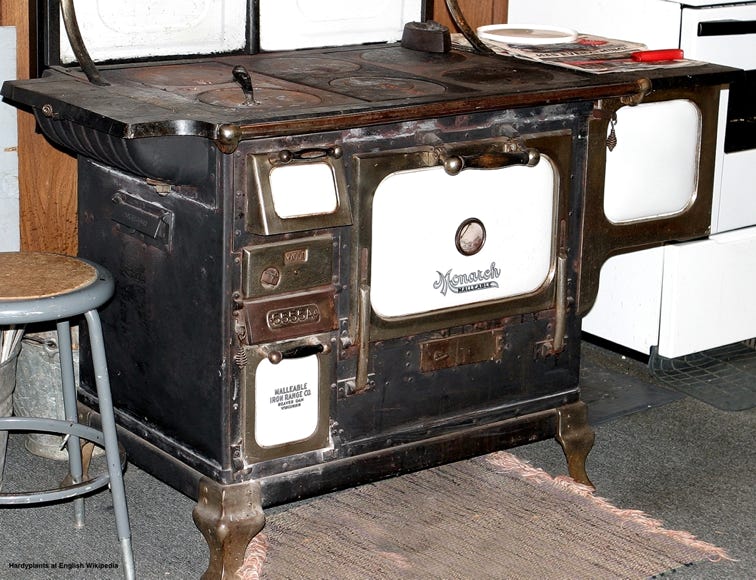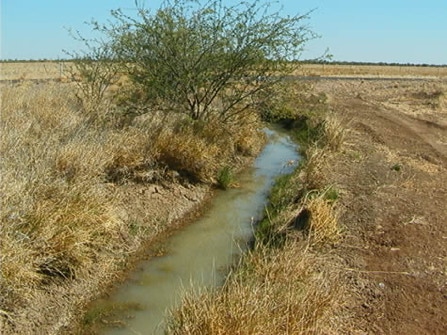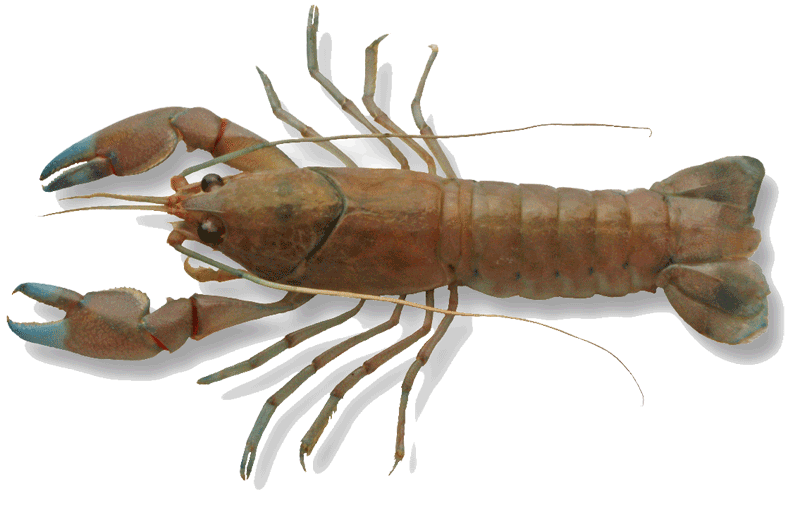The moon is lonely in the sky,
The bush is lonely, an' lonely I
Stare down the track no horse draws nigh
An' start ... at cattle bells.
The Shearer's Wife by Thomas Louis Buvelot Esson
In 1999 I completed a University unit The History And Function Of The Family. The major assignment for the subject required students to undertake an analysis of key events in a specific period of their family’s history. I have decided to include some sections of my text here in the hope that it will give some insight into how life on Werona in the 1950s and 1960s fitted within broader historical and social contexts.
Thomas Frazer married Kathleen Stephenson on the 26th June 1954, in St Columba’s Catholic Church, Wilston, Brisbane. The couple had met in Brisbane, when Tom was on a holiday. He lived with two aunts on a sheep property in the far west of Queensland, his mother lived in Brisbane. Kay’s family lived in Clayfield. Kay’s father, Alexander, a brilliant mathematician, had been Queensland’s youngest bank manager. Kay’s mother, Kathleen, had her letters for piano, violin and singing.
BUSH COOKS AND CITY WIFE.
“She couldn’t boil water when I married her”, was a stock ‘joke’ of a bushman who had taken a ‘city wife’. When drunk, Tom was apt to add, “she couldn’t even light the bloody stove!” With the latter comment he quite unintentionally indicated the truth of Kay’s situation. The kitchen stove at “Werona” was a huge combustion range with an attached hot water system. The lighting of it was a art form, the maintenance of it was hard work, and cooking with it demanded experience. Those who did have experience with the use of it, Tom’s maiden aunts, were not initially pleased with the the idea of his young wife being involved in the running of the household. Alma, in particular, was an accomplished ‘bush cook’ but she was reluctant to teach Kay how to prepare the items on the essentially ‘fixed’ menu.
The “Werona” stove was of a style marketed in 1888. Taylor (1988) stated that there was “a real skill in using these ovens, and most of it was in knowing how hot it was” (p.202).
“Werona’s” daily menus were based around generous portions of mutton – roasted, boiled, grilled, and fried! Despite the stifling heat,.. hot foods comprised most meals. Breakfast always consisted of mutton chops. Morning and afternoon smokos were substantial affairs. Dinner and tea were also large meals.
Taylor provided a detailed description of station food in the 1870’s. Cannon (1998) commented on the fact that the colonial diet was based on a heavy consumption of meat (p.841). Many features of the meals at “Werona” in the 1950’s and 60’s were the same as those of the colonial period and they were nearly as arduous to prepare.


These wood stoves are different brands to the one that was on Werona, but they are similar in their style and operation.
“I have learned that wood stoves can be messy and that cooking or baking with a wood stove is nowhere near as easy as setting an oven thermostat or turning on a burner. There are ashes to clean out, wood to bring in, and the fire must be maintained and fed on a very regular basis.”
http://www.choosingvoluntarysimplicity.com/the-wood-burning-cook-stove-in-my-kitchen/
ISOLATION.
“Talk to me Tom”. The tall thin shadow that was my mother put her arms around the dark bulk of my father. They sat in deep shade on the steps, their forms backlit by the scorching outback sun that silhouetted them like figures in a puppet play. This scene, among the earliest of my memories, was etched deep by repetition. These strangers who were my parents, knew their parts well, and the script now called for the slow exhalation of smoke from his Log Cabin roll-your-own, and an unrelenting silence.
Taylor, (1988) commented on the inescapable loneliness that was the lot of a squatter’s wife in the 1840’s (pp.168-169). My mother’s experience as a grazier’s wife in the 1950’s was not very different in this regard. The physical isolation of a homestead that was a two and a half hours drive from the nearest town structured many of the experiences of family life.
The driver of the weekly mail truck from Cunnamulla was the most regular visitor to the property. He delivered grocery items, machinery parts, and a padlocked canvas mailbag containing newspapers and correspondence. My mother’s weekly letter to her family in Brisbane was placed in the empty bag for return mail. Our nearest neighbour was a half hour drive away.
Mileage was rarely the means of reckoning distance. It was the condition of the dirt roads that dictated the number of hours spent on the hot and bone-jarring journey to any other location (McCord, 1986, p.145; Johnston, 1982, p.80). Premier Theodore created the Main Roads Board in 1920 with the goal of improving rural roads (Johnson, 1982, p.165). However it was not until payable oil was discovered at Moonie in 1961 that a substantial section of western highway was bitumenised (Holthouse, 1978, p.253). Commenting on the late 1800’s, Taylor (1988) states that “inside the homestead, writing letters was not only a pastime but also a social necessity” (p.222). In this matter also, the experiences of rural isolation in the 1950’s and 1960’s, were consistent with those usually ascribed to the colonial period.
The only other contact with the world beyond our family was made by telephone. Trunk calls could be booked with the exchange, however the quality of connection was so poor that one had to almost shout to be heard over the static on the line. A number of properties radiating out from Cunnamulla shared the upkeep of the phone line. This service was called a party line. There was no possibility of a private call as any person connected to the line could “listen in”.
The isolation and boredom in the lives of some rural women mean that they regularly “listen in” to another’s call (Gould (1989) in K. James (Ed.) p.25). Queensland’s first trunkline, from Brisbane to Ipswich, was only installed in 1899 (Cannon, 1998, p.721). It is not surprising, therefore, that the standard of service to the remote west was still poor in the 1950’s.

“1962. A world suffocated by the swirling clouds of tobacco smoke, in pubs, cinemas, trains, buses, on the streets, and even in hospitals and schools. Around 70% of men and 40% of women smoked. Smoking was omnipresent, accepted, established. “
http://www.prevencionbasadaenlaevidencia.net/uploads/PDF/RP_Fifty_years_since_smoking_RCP.pdf

Werona used a black bakelite hand crank winder telephone.
WOOL-CHEQUES AND THE WEATHER.
“Water, water, everywhere and not a drop to drink” was a lament for the absence of alcohol that my father also employed to describe the artesian water supply on “Werona”. The bore water, that made it possible to graze stock on the arid Warrego plains, was so high in mineral content that we could not drink it, and it killed many plants. If there was to be any annual wool-cheque it was essential to keep the bore drains flowing through the drought stricken paddocks. My father would regularly load wife, kids, dogs, shovels, and gun, onto the old Dodge truck, and head out to clear the drains. As there was no alcohol consumed on these trips I remember them as the happiest of family outings.
Fitzgerald (1986) stated that “the use of artesian water began in the 1880’s. A government bore was sunk in Cunnamulla in 1882 (p.148). In 1887 the first free flowing deep bore in Queensland was sunk in Barcaldine (Cole-Adams, 1989. p.51). Holthouse (1978) reported that “there was a rush to put down bores, and between 1885 and 1890, Queensland’s sheep population doubled from nine to eighteen million.” In thirty years more than 1200 bores were sunk. As the supply of artesian water dropped off, controls on drilling were introduced (p.188). Bore water varied greatly in quality and was often not suitable for domestic use (Taylor, 1988, p.183).
The size of the annual wool cheque governs the lives of graziers. Unfortunately, no amount of hard work controls wool prices or seasonal conditions. The Cunnamulla region was in the grip of severe drought from 1945 to 1947 (Bromby, 1989. p.51). In 1949, the outbreak of the Korean War boosted the world demand for wool. “From May 1949 until March 1951 the prices skyrocketed at the Australian wool sales, climbing nearly five -fold” (p.117). From 1951 onwards there was a decline in wool prices.
During the 1950’s, under the Menzies government, the standard of living in Australia was high (Kent, J., Elder, B. & Willey, G. 1988, p.99; Disher, 1987, p.155). Unfortunately the fortunes of graziers are determined as much by regional weather as by government policies and world events.
In 1956 there were serious floods in Queensland which caused high stock losses (Fitzgerald, 1984, p.197).
In order to reach a hospital for the delivery of her second baby, my mother had to be towed over flood waters on a raft.
In Australia in 1958-59 there was inflation and a large drop in wool income (Griffiths, 1993, p.80). The 1960’s were drought years, and by the early seventies graziers were walking off their properties never to return (Luck, 1980, p.340).
The Frazers were among those families lucky enough to sell-out rather than walk-out. In 1971 drought stricken “Werona” was sold to the owner of a large neighbouring property. Three years earlier, Kay had walked off the property with five children and little more than the clothes they stood up in. Tom Frazer died of alcoholic poisoning in 1974. He was 51 years old.

A Bore Drain
http://www.expedition360.com/australia_lessons_science/2001/08/the_great_artesian_basin_forma.html
Some of the bore drains were great places to find and catch the common yabby (Cherax destructor). It is the best known of the freshwater crayfish species native to Australia.
See: http://dreamfish.com.au/wordpress/how-to-articles/how-to-catch-the-humble-freshwater-yabby-cherax-destructor/

REFERENCES
Brumby, R. (1989). Unlocking the land: The saga of farming in Australia. Melbourne: Lothian Publishing Company.
Cannon, M. (1998). The roaring days: How Australia grew into a nation like no other. Melbourne: Today’s Australia Publishing Company.
Fitzgerald, R. (1984). From 1915 to the early 1980’s: A history of Queensland. St Lucia: University of Queensland Press.
Fitzgerald, R. (1986). A history of Queensland: From the Dreaming to 1915. St Lucia: University of Queensland Press.
Gould, S. (1989). Family problems of farm women. In K. James (Ed). Women in rural Australia. (pp.20 -29). St Lucia: University of Queensland Press.
Griffiths, T. (1993). Beautiful lies: Australia from Kokoda to Keating. Kent Town, SA: Wakefield Press.
Holthouse, H. (1978). Illustrated history of Queensland. Sydney: Rigby Limited.
Johnston, W. (1982). The call of the land: A history of Queensland to the present day. Milton: Jacaranda Press.
Kent, J., Elder, B. & Willey, K. (1988). Memories: Life in Australia since 1900. Brookvale, NSW: Child & Associates Publishing Company.
Luck, P. (1980). This fabulous century. Sydney: Lansdowne Press.
McCord, M. (1987). Outback women. Sydney: Doubleday Australia.
Taylor, B. (1988). Station life in Australia: Pioneers and pastoralists. Sydney: Allen & Unwin.
Frazer
- FRAZER - From Kingussie, Scotland, to Sydney, Australia.
- FRAZER - First to Cabramatta and then to Binda, New South Wales.
- FRAZER/MARKS/LAMB - Meeting the neighbours
- FRAZER/MARKS/LAMB - An Inn, Horse Races, and Gold;
- FRAZER - Bullock Drays and Bushrangers.
- FRAZER/MARKS - ‘Markdale’ - On the move again.
- FRAZER/MARKS - They made a long trek north.
- FRAZER - The Queensland story - By 1878 the Fraser family settled in Charleville.
- FRAZER/STEWART/DOODY - Charleville 1892 - Alexander Frazer married Agnes Jane Stewart.
- FRAZER - Wyandra 1905 - Alexander Jnr’s son, Alexander, works as a blacksmith.
- FRAZER - Wyandra 1915 - 1921 - The Great War and A Soldier’s Memorial.
- FRAZER - Will they still remember us?
- FRAZER/GRANT - Wyandra 1921 - 26 - A Marriage, and Christmas Mistletoe.
- FRAZER - Wyandra 1928 - A Fancy Dress Ball.
- FRAZER - Wyandra 1920s - Bullock Wagons to Tractors and Trucks.
- FRAZER - ‘Werona' via Bollon 1930s.
- FRAZER - Barcaldine 1930’s - ‘Avonslea’
- FRAZER - Barcaldine 1936 -1940s - ‘Avonslea’, Elm St. and a Flower Show.
- FRAZER - Brisbane 1950s - 1960s - West End and Coorparoo.
- FRAZER - Southport and Surfers Paradise.
- FRAZER - ‘Werona’ and ‘Beneree’ 1955 to 1970 - ‘Of drought and flooding rain’
- FRAZER - ‘Werona’ - Click go the shears
- FRAZER - Cunnamulla - “I can see the water tower!”
- FRAZER - Cunnamulla 1965 & 1966 - School Days
- FRAZER - ‘Werona’ - The bush hath friends to meet him
- FRAZER - ‘Werona’ - The magic of trees
- FRAZER - ‘Werona’ - A portrait of our chook yard
- FRAZER - ‘Werona’ - The moon is lonely in the sky
- FRAZER - Toowoomba - ‘Someplace Green’
- FRAZER Summary - Alexander Fraser & Margaret McBean to Alexander ('Sonny') Frazer.
- FRAZER 2016 ’Werona’ revisited
- FRAZER - Marks - Lamb - Stewart - Doody -The case is never closed.

